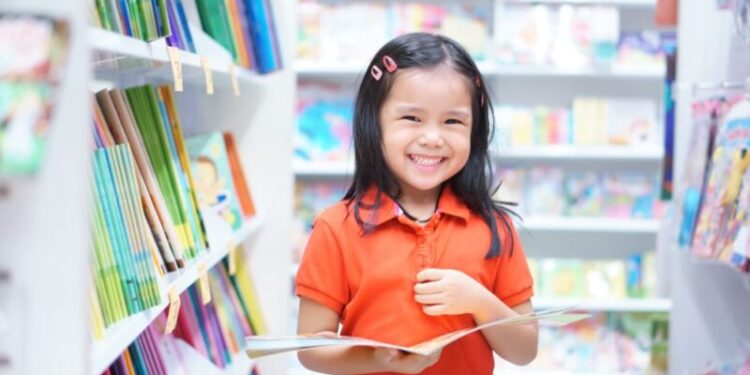Lynn How
Lynn is the Editor at Teacher Toolkit. With 20 years of primary teaching and SLT experience, she has been an Assistant Head, Lead Mentor for ITT and SENCO. She loves to write and also has her own SEMH and staff mental health blog: www.positiveyoungmind.com. Lynn…
Read more about Lynn How
Is your school library both a great learning and recreational space?
Current research, repeatedly identifies the clear link between reading for pleasure in early years and educational attainment with improved life chances.
Post-pandemic, this is increasingly important. Existing literacy issues for individual children have been exacerbated. In order to entice children into reading for pleasure, school libraries need to be welcoming and exciting spaces.
What makes a great school library?
‘A school library is a school’s physical and digital learning space where reading, inquiry, research, thinking, imagination, and creativity are central to students’ information-to-knowledge journey and to their personal, social, and cultural growth’ (IFLA Guidelines).
Fit for Purpose?
School libraries don’t need always need a huge budget to turn them from tired piles of books to creative and productive spaces. Often all that is needed is a key member of staff, or someone from the wider community, a bit of imagination and some hard work from both students and adults. Unfortunately, many school libraries are still not fit for purpose. National library survey key findings include:
Schools with a higher proportion of children on free school meals are more than twice as likely not to have access to designated library space.
- The findings highlight the urgency of securing national School Library Strategies and investment in England, Wales and Northern Ireland, drawing on the example of Scotland (Nick Poole, CILIP).
5 ways to develop your library
1. Books – First be ruthless. Bin anything that looks uninviting, outdated or tatty and then see what you have left. There is no need to buy new books – if budget is an issue …
- Go to your local library and ask for the first pick of books that are being withdrawn. Most are still current and in good condition.
- Ask for book donations from home. Even 1 per pupil would be a lot to start you off.
- Provide key children on the library committee with £5 to trawl the local charity shops for nearly new reads.
2. Décor – I’ve seen some amazing school libraries which clearly have had a lot of money spent on items such as toadstool seats or large murals but again, it doesn’t have to be expensive. Is there anyone in the community or in school who can paint murals (or at least draw one for children to paint!)?
Alternatively, you can use a visualiser and a projector to make any image larger. Just line it up with the space you want to be painted and trace the image straight onto the wall.
For soft furnishings and shelving etc, our nation’s favourite Swedish furniture shop is an option, as well as the second-hand version of these products. Alternatively, are there any local companies who could sponsor a redesign and add their company logo to the library theme?
3. Multi-use – Have as much timetabled in your library as possible. Not just pure reading, you could have art, mindfulness or a gaming club such as dungeons and dragons, or themed genre clubs such as manga.
4. Availability – Where possible open your library at break and lunchtime. Timetable classes or parts of classes during the day to borrow books. See if there are members of the wider community who would like to come and volunteer. There are people who are retired, itching to find something fulfilling to do with themselves, the challenge is finding them!
Having an actual paid librarian/teaching assistant would be an amazing asset if your budget allows it. They can then double up in order to run clubs and reading interventions.
5. A hub for the whole school – Raise the profile of the school library within your leadership team and staff meetings. Get students involved as librarians and find out what they want out of their library.
Perhaps there could also be a bank of iPads in there for lunchtime educational use or maybe focus on reluctant readers; creating opportunities to share high-interest low-level books for those with additional needs. The possibilities are endless.
Every child deserves as many opportunities as possible to develop a love of reading. School libraries are instrumental in ensuring good quality book access for all.



















